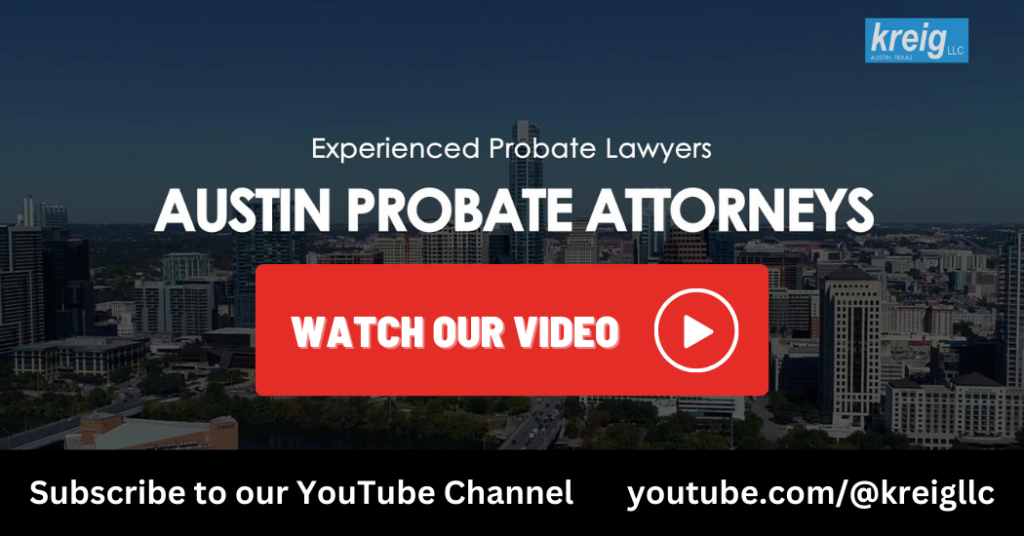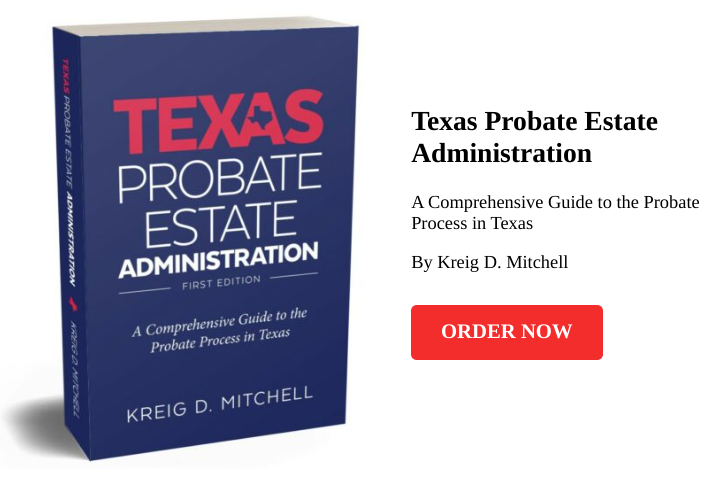Estate planning documents frequently contain seemingly simple terms that later spawn disputes. A will leaves someone “the house” or “the farm” or “the real property.” Years pass. The testator sells parts of the property or receives notes as payment. The testator dies. Beneficiaries argue about what passes under the will. Some claim the testator meant to include everything associated with the property—not just land but also notes, proceeds, and related assets. Others insist the will means only what it says.
Texas courts face a fundamental choice in these disputes. They can admit extrinsic evidence about what the testator supposedly intended beyond the written words. Alternatively, they can enforce the will’s plain language and refuse to rewrite it based on assumptions about unstated intent. This choice affects not only individual cases but also the broader reliability of written estate planning documents.
San Antonio Area Foundation v. Lang, 35 S.W.3d 636 (Tex. 2000), provides an opportunity to examine when courts will—and will not—look beyond a will’s four corners to determine a testator’s intent.
Facts & Procedural History
Ruth executed her will on January 17, 1991. Paragraph five of that will provided: “I devise and bequeath the real property and oil and gas real properties in my estate located in Frio County, Texas and Prue Road in San Antonio, Texas one-half to my nephew, SYLVAN STEPHEN LANG, and one-half to my niece JEANNE LANG MATTHEWS.” After making several cash legacies, Ruth’s will gave the residuary of her estate to the San Antonio Area Foundation, a charitable organization.
When Ruth died, she owned a twenty-five percent undivided interest in approximately ninety acres located on Prue Road in San Antonio. The ninety acres were originally part of a 219-acre tract owned by the Lang family. Over the years, the family partially developed and sold portions of this tract. The family received real estate lien notes, promissory notes, cash, and net-profit agreements in exchange for the sales.
When Ruth executed her will in 1991, she already owned a one-quarter interest in a real estate lien note and accompanying net-profit agreement from a January 1990 sale of part of the Prue Road property. In December 1993, the Lang family sold more acreage from the Prue Road property. Ruth acquired a twenty-five percent interest in two additional notes taken as proceeds from that sale.
Until her death on July 25, 1995, Ruth kept her twenty-five percent interest in three lien notes. She also held an unsecured promissory note executed in December 1993. Ruth kept cash in a “cash reserve” bank account set up to receive payments from transactions involving the Prue Road property. At the time of suit, Ruth’s interest in these assets was worth about $120,000.
In July 1993, Ruth executed a codicil to her will making additional cash bequests. She did not change paragraph five of the will. She did not add language to ensure her interest in the notes and net-profit agreements would pass to Sylvan and Jeanne.
After Ruth’s death, the parties disputed whether Ruth’s interest in the notes, net-profit agreements, and cash passed to Sylvan and Jeanne under paragraph five or passed to the Foundation as residuary beneficiary. The parties filed cross-actions for declaratory judgment. This was the basis of the probate litigation.
The probate court granted summary judgment for the Foundation. The court ruled that the meaning of “real property” was unambiguous. The court excluded extrinsic evidence offered by Sylvan and Jeanne about what Ruth meant by “Prue Road.” The probate court concluded that parts of the Prue Road property sold before Ruth’s death were adeemed from the devise. Therefore, Ruth’s interest in proceeds from the sales passed to the Foundation as residuary beneficiary.
The Court of Appeals reversed and remanded for trial. That court determined extrinsic evidence offered by Sylvan and Jeanne created a fact issue regarding Ruth’s intent. The Foundation petitioned the Supreme Court for review.
The Four Corners Rule for Will Construction
In construing a will, the court’s focus is on the testator’s intent. This intent must be ascertained from the language found within the four corners of the will. The Supreme Court stated this principle in Shriner’s Hospital for Crippled Children of Texas v. Stahl, 610 S.W.2d 147, 151 (Tex. 1980).
The court should focus not on what the testator intended to write but on the meaning of the words actually used. The Supreme Court emphasized this distinction in Stahl and reaffirmed it in Rekdahl v. Long, 417 S.W.2d 387, 389 (Tex. 1967), and Kirk v. Beard, 162 Tex. 144, 345 S.W.2d 267, 273 (1961). Courts must not redraft wills to vary or add provisions under the guise of construction to reach a presumed intent.
Determining a testator’s intent from the four corners of a will requires careful examination of the words used. If the will is unambiguous, a court should not go beyond specific terms in search of the testator’s intent. The Supreme Court stated this rule in Frost National Bank v. Newton, 554 S.W.2d 149, 154 (Tex. 1977). That case noted that absent an express statement in the will, courts cannot make ad hoc assessments of what the testator believed to be primary versus incidental purposes.
The Supreme Court has long held that when there is no dispute about the meaning of words used in a will, extrinsic evidence will not be received to show the testator intended something outside the words used. The Court stated this principle in Lehman v. Corpus Christi National Bank, 668 S.W.2d 687, 688 (Tex. 1984), and in Newton, 554 S.W.2d at 153.
The Supreme Court has also said courts may always receive and consider evidence concerning the situation of the testator, the circumstances existing when the will was executed, and other material facts that will enable the court to place itself in the testator’s position at the time. The Court stated this in Stewart v. Selder, 473 S.W.2d 3, 7 (Tex. 1971). However, this broad approach to the admissibility of extrinsic evidence applies only when a term is open to more than one construction.
The Settled Legal Meaning of “Real Property”
Ruth’s will devised to Sylvan and Jeanne her interest in real property located at Prue Road. The term she chose to describe the devise—”real property”—does not require extrinsic evidence to understand. Sylvan and Jeanne argued Ruth’s devise of “real property” also included her interest in the real estate lien and promissory notes, net-profit agreements, and cash in the reserve account. Neither Texas statutory nor common law supports this argument.
Real property is defined as land and generally whatever is erected or growing upon or affixed to land. The Supreme Court cited this definition in Chastain v. Koonce, 700 S.W.2d 579, 584 (Tex. 1985). The Texas Probate Code (which is now the Estates Code) defines “real property” as including estates and interests in land—corporeal or incorporeal, legal or equitable—other than chattels real.
Personal property is defined broadly to include everything that is subject to ownership not falling under the definition of real estate. The Court cited Erwin v. Steele, 228 S.W.2d 882, 885 (Tex. Civ. App.—Dallas 1950, writ ref’d n.r.e.), for this definition. The Probate Code defines personal property as interests in goods, money, choses in action, evidence of debts, and chattels real.
Promissory notes, net-profit agreements, and cash are personal property rather than real property. Because real property has a settled legal meaning, courts need not look beyond the terms of the will to find Ruth’s intent.
Section 58(c) of the Texas Probate Code supports this conclusion. That section mandates: “A devise of real property does not include any personal property located on or associated with the real property unless the will directs that the personal property [is] included in the devise.”
Because the real estate lien notes and net-profit agreements associated with the Prue Road property are personal property, they would not pass with the devise of real property unless Ruth otherwise specifically directed in her will. Had Ruth wanted to include the personal property associated with the Prue Road real property in her devise, she could have said so in her will. Since she did not, Ruth’s interest in the disputed items passed to the Foundation under the residuary clause as personal property.
Why Extrinsic Evidence Was Inadmissible
Sylvan and Jeanne emphasized language in Stewart v. Selder stating that extrinsic evidence is always admissible to show the situation and circumstances surrounding the testator at the time the will was executed. They argued no controlling authority requires an ambiguity in a will before a court may consider extrinsic evidence.
The Supreme Court found this position inconsistent with long-standing Texas jurisprudence. The Court has said on numerous occasions: “The intent must be drawn from the will, not the will from the intent.” When a testator’s intent is apparent on the face of the will, extrinsic evidence is not admissible to show a contrary meaning. Furthermore, extrinsic evidence may not be used to create an ambiguity in a will when the words used are unambiguous.
Sylvan and Jeanne’s argument for liberal use of extrinsic evidence stemmed partly from a misreading of Stewart‘s discussion of extrinsic evidence. Stewart sought to distinguish two types of extrinsic evidence: background or historical extrinsic evidence of the testator’s surroundings and the testator’s “other declarations” that more directly contradict the intent expressed in a will.
Neither party contended that “other declarations” of Ruth’s intent were admissible. However, Sylvan and Jeanne argued that background historical extrinsic evidence was admissible to show the Lang family considered Prue Road to be one “ball of wax” that included the land and the notes associated with its development.
This reliance on Stewart ignored the Supreme Court’s later directive in Lehman. In that case, the Court held that Stewart‘s broad support for extrinsic evidence applies only when the testator’s will uses a word susceptible to more than one construction. In Stewart, the Court held that because “cash” could refer to either dollar bills or other forms of currency like checks or securities, extrinsic evidence was necessary to understand the testator’s intent. No such ambiguity existed in Ruth’s will.
Chief Justice Calvert’s concurrence in Stewart rings just as true now as it did when he penned it. He disagreed with the Court’s broad language. He argued that some terms such as separate and community property are so clear, plain, and unambiguous that they do not allow constructions other than those ascribed to them in law. The same can be said of the term “real property” in Ruth’s will. It is a term with a specific meaning ascribed to it in law.
The definition of real property excludes personal property. Ruth’s use of the term “real property” in her will is unambiguous. As a result, any sort of background historical extrinsic evidence to explain her will is unnecessary. The probate court did not err in excluding it.
Sylvan and Jeanne’s extrinsic evidence showed the family referred to the land on Prue Road and the notes associated with its development collectively as “Prue Road.” In effect, Sylvan and Jeanne attempted to insert an ambiguity into the term “real property.” However, if “real property” can be made ambiguous or unclear by extrinsic evidence, then few—if any—terms in the legal lexicon cannot be made unclear by extrinsic evidence.
The Doctrine of Ademption
Ademption describes the extinction of a specific bequest or devise because of the disappearance of or disposition of the subject matter given from the estate of the testator during his lifetime. Unless the testator specifically provides otherwise in the will, the sale or removal of a specific bequest from the estate adeems the devise or bequest.
A will speaks at the time of the testator’s death. Only the estate the testator then possessed passes under the terms of the will. When a specific devise of realty is adeemed because the testator sold it before death, absent a contrary intent expressed in the will, the beneficiaries of the realty under the will are not entitled to the sale proceeds. Instead, the proceeds pass under the residuary clause.
The most common cause of ademption is a testator’s voluntary sale of the subject matter of a devise. That is what occurred here. Although Ruth devised her interest in the Prue Road real property to Sylvan and Jeanne, the parts of the land that were sold were adeemed. As already discussed, Ruth’s bequest of real property does not include the personal property associated with Prue Road.
Ruth did not include her interest in the sale proceeds in her devise to Sylvan and Jeanne. Thus, Ruth’s interest in the personal property received from sales of parts of the Prue Road real property does not pass with the specific bequest of Prue Road real property. Therefore, Ruth’s interest in these disputed assets passes to the Foundation under the residuary clause.
Sylvan and Jeanne argued the doctrine of ademption is harsh and that courts disfavor it. That may be true in some circumstances. However, ademption is also a long-standing doctrine. The Supreme Court applied it in Stahl, holding adeemed a testator’s bequest of her “home place” when she did not change the terms of her will after the home’s sale.
Ruth had both the capacity and opportunity to prevent the partial ademption of the Prue Road devise. Ruth’s attorneys unambiguously used the term “real property” in Ruth’s will. When a will is drafted by an attorney, courts assume its words are used correctly and intentionally in their technical sense. The Court stated this principle in Mitchell v. Mitchell, 244 S.W.2d 803, 806 (Tex. 1951).
Ruth’s will made certain to provide for alternative beneficiaries for Ruth’s numerous cash legacies. This indicates an intent to account for changed future circumstances. The will did not, however, ensure that Ruth’s interest in subsequently acquired notes or collections from sales of parts of the Prue Road real property would pass to Sylvan and Jeanne along with the real property.
Finally, when Ruth made additional cash bequests in a July 1993 codicil to her will, she did not change paragraph five to ensure her interest in the notes and net-profit agreements would pass to Sylvan and Jeanne. When a testator executes a codicil, the effect is to republish the will. When Ruth executed the 1993 codicil, she did not change her will to devise to Sylvan and Jeanne her interest in the note acquired in January 1990 along with the existing devise of real property.
The subsequent sales of the Prue Road real property adeemed from the devise those parts of the land sold. Ruth’s interest in the sale proceeds, as personal property, passes to the Foundation under the residuary clause.
The Takeaway
This case shows that Texas courts generally will not admit extrinsic evidence to construe unambiguous terms in wills even when beneficiaries argue the testator intended a broader meaning. The term “real property” has a settled legal meaning that excludes personal property such as promissory notes, net-profit agreements, and cash. Section 58(c) of the Texas Probate Code (which is now the Estates Code) reinforces this distinction by providing that devises of real property do not include personal property located on or associated with the real property unless the will specifically so directs. When testators sell property specifically devised in their wills before death, those portions of the devise are adeemed and the proceeds pass under the residuary clause as personal property rather than to the beneficiaries of the real property.
Do you need help with a probate matter in Austin or the surrounding area? We are Austin probate attorneys. We help clients navigate the probate process. Call today for a free confidential consultation, 512-273-7444.
Our Austin Probate Attorneys provide a full range of probate services to our clients, including helping with probate administrations. Affordable rates, fixed fees, and payment plans are available. We provide step-by-step instructions, guidance, checklists, and more for completing the probate process. We have years of combined experience we can use to support and guide you with probate and estate matters. Call us today for a FREE attorney consultation.
Disclaimer
The content of this website is for informational purposes only and should not be construed as legal advice. The information presented may not apply to your situation and should not be acted upon without consulting a qualified probate attorney. We encourage you to seek the advice of a competent attorney with any legal questions you may have.




